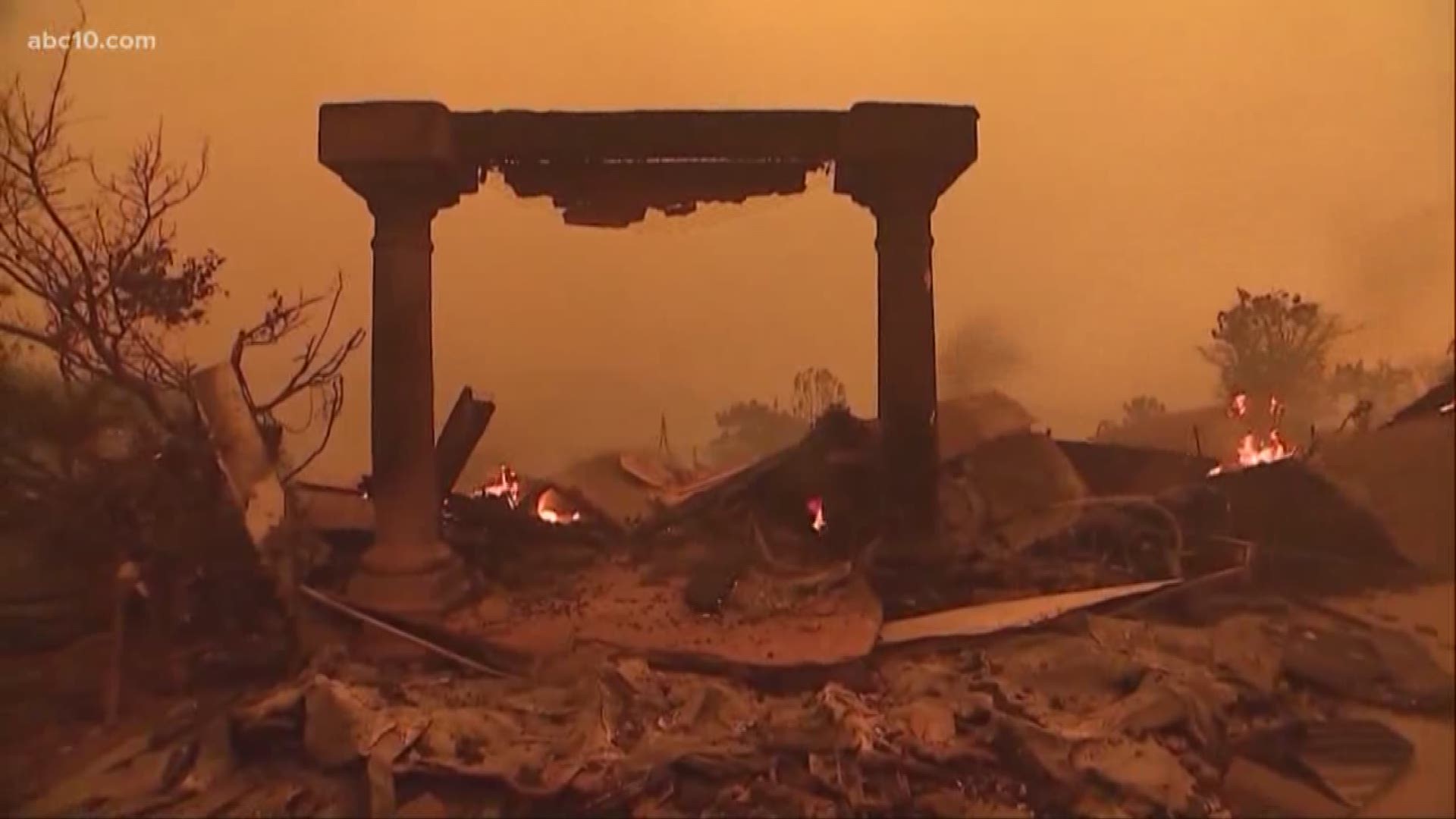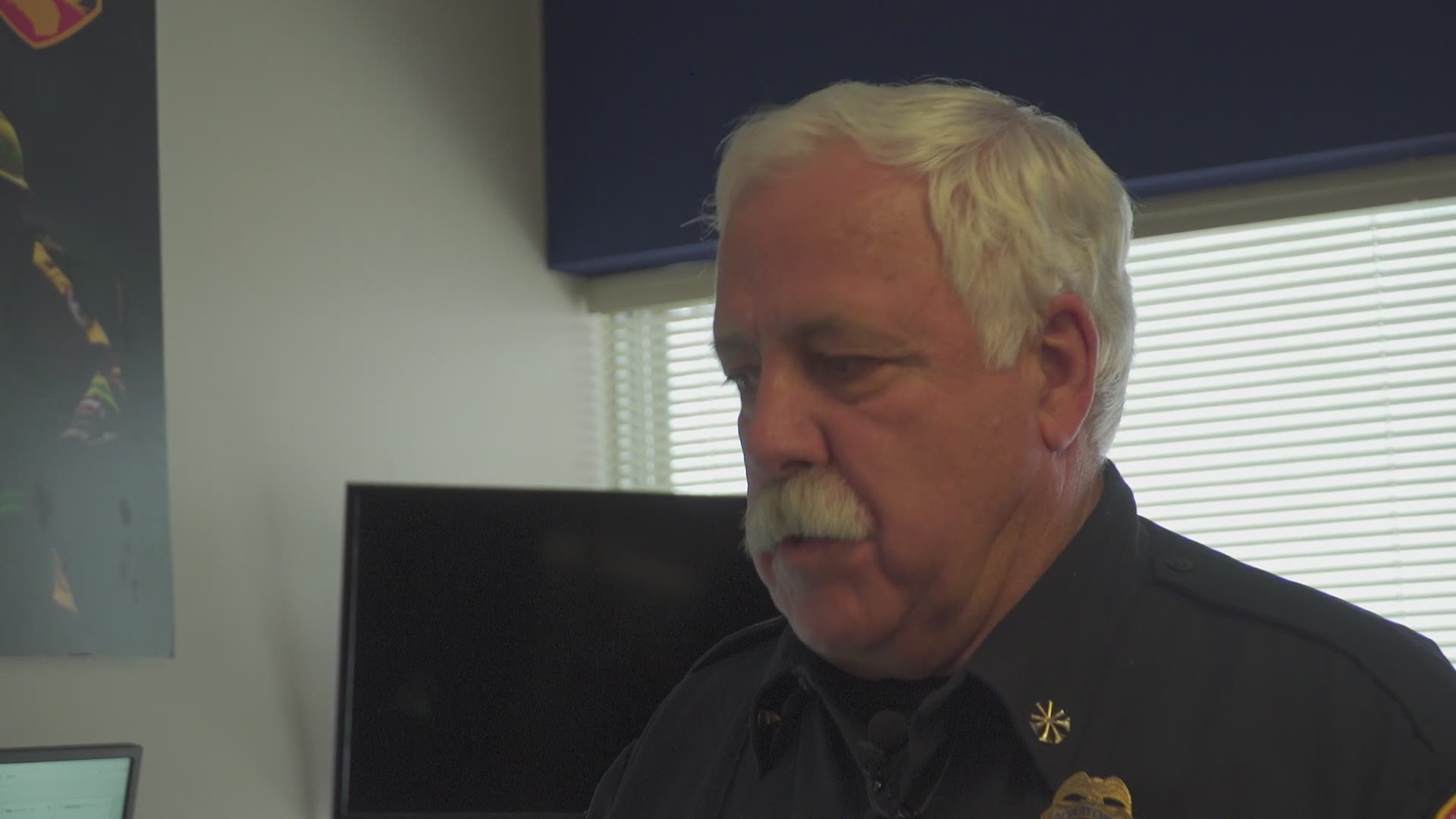SACRAMENTO, Calif — Cal Fire announced Wednesday that it is now transitioning out of peak fire season and into what officials call winter preparedness. ABC10 met up with Scott McLean, Cal Fire's Deputy Chief of Communications, to get a better sense of how the 2019 season differed from prior years.
Mike Duffy: Would you say fire season's over?
Scott McLean: We are starting to down-staff our seasonals as we speak right now. As of December 9th, those seasonals will be laid off throughout the state. We are moving into that winter preparedness time as well.”
MD: What’s a general assessment of the season?
SM: “We’ve only burned about [128,000-129,000 acres] in the state as far as Cal Fire and U.S. Forest Service jurisdiction. Last year, we were looking at over 789,000 acres burned the same period of time. So, California is always going to burn, we’re always going to have a fire, but this year was, of course, much better, and that’s due to an increased staffing, an increase of the projects or the fuel reduction projects. Also trying to bring our forests back to that resiliency where they need to be. So there’s a myriad of different things that played a role in this year, including the weather, of course.
(READ ABC10's INVESTIGATION INTO CALIFORNIA WILD FIRES: Fire. Power. Money. | California’s burning crisis and how it’s going to cost us all.)
MD: What did we see in the weather that’s different from previous years?
SM: In 2017, we saw a really good winter storm. We had good snowpack, good amount of rain, now it’s just coming off the drought that started in 2010. So what that did is that just promoted all the vegetation that hadn’t had any moisture for well over six years and it caused a lot of growth, especially the grasses which dried out very quickly in ’17. So we started seeing some north winds early on in the year of 2017. The temperature was 100 degrees plus for several weeks consistently for several weeks which really dried everything out and made it very receptive to fire. Hence we started seeing those very large fires, one after another after another bringing 1.6 million acres plus that particular year. And unfortunately, 46 lives were lost. 2018, a lot of rain again, did see some flooding, no snow pack, but again that weather picked up the same. We saw some winds start early. We saw that 100 degree temperature, so again the state dried out that much more. Again, still had that grass crop that was enhanced by that weather pattern early in 2018. So we had plenty of fuel, very receptive to fire and you saw those significant fires in 2018, unfortunately including the camp fire, which the vegetation was driest in history, really, starting November 8th.”
MD: What's your response to the current rain event?
SM: We haven’t had that weather pattern this year, it’s been pretty moderate. So we’ve seen 80s, 90s pretty moderate, some 100s, pretty much no wind until we hit the fall weather and that’s when you started to see the uptick of fires, the Kincade and the fires down south. Unfortunately, three lives were lost down there. So this weather pattern is definitely very welcome for us as a fire service and for all the fire services throughout the state. It gives us kind of that chance to catch up, catch our breath, as well as helping with other things as far as bringing that moisture into that vegetation and to a state where we’ll need to be which will take several years of this type of winter though.
MD: How did this year compare to other years?
SM: Here’s one thing. This is structures destroyed in 2019, 526 structures destroyed. You compare that to 2018, you’re looking at 22,704 structures destroyed. And then 2017, definitely not as bad as 2018 because the whole community of Paradise was destroyed, but 10,922 structures destroyed in 2017.
MD: What things did Cal Fire do this year?
SM: Well, we increased our staffing mid-summer with almost 400 seasonal firefighters which is a big help. We also had funds allocated to bring on and basically purchase 13 brand new fire engines. Not a replacement, but additional to our staffing level, so that’s another 90 folks on top of that. We had those 35 projects that were identified, fuel reduction projects as far as forest resiliency that definitely enabled a lot of these fires to be stymied. So there’s a lot of things out there including the grant program that brought everybody together with a common goal this year to get things done.”
MD: How about budget-wise?
SM: Budget-wise, about 2.5 billion, a little bit over, at one time. Very good, very helpful of course. Our suppression costs was 691 million dollars in the bank in case we needed that money of which we’re only a little over 200 million right now spent. So that kind of gives you another indicator as how timid this fire season was.”
MD: Were there any new policies in place that might have helped with this fire season?
SM: Just the action that was taken and the ability for us to enable us to get these projects which are pretty prominent, the 35. Keep in mind too, we’re doing other projects similar to those. But these were identified as top priorities that affected over 200 different communities in a good way. Whether it be fuel reduction by making fuel breaks or cleaning up the forest floor to start bringing that resiliency back in our forestlands. So there’s just a lot of aspects that took place this year that we haven’t seen for some time.
MD: Did the PG&E power shutoffs make a difference?
SM: We’re not associated as far as PG&E. We don’t interact with PG&E on the PSPS. So as far as the answer to your question, we don’t have any statistics to show anything at this time.
READ MORE:
MD: Is there anything planned? Is there any dialogue that’s happening about a strategy or anything like that?
SM: We’re always open to conversations of course. So as far as again statistics, we don’t have anything and nothing has been shown to us as of yet. We’re embracing different types of technology that’s coming down our pike. We’re going to review different aspects as far as detecting fires for example which uses satellites as an example. We’re working with other companies looking at which way the fire will spread. Look at how these fires spread the last couple of years. Very quick, very severe, very aggressive. So any type of help we can get is just going to be very positive.
In this case, the last couple years, fires spread so quickly, we had to change our tactics and strategies to a certain degree. Indirect attack for example. Get out ahead of it and take that fuel away from it more times than not. Aircraft. We have 12 new [unintelligible] coming online here within probably a year and a half. We’re starting to see them starting to come in now. Technological? Yes. Current product? Yes. Big help? Yes. They carry 1,000 gallons of water, compared to the Huey’s which carried 360 gallons. They might be carrying a little bit larger crew. Again, all these determinations need to be made. C130s in a year an a half. We’re looking at 7 of those, can drop 4,000 gallons of retardant. So we’re building up our resources as we go to be out ahead of what could happen.”
MD: How would you summarize this fire season?
SM: Definitely the weather played a major role in the fire season. But I don’t want to stymie the fact that we saw so much assistance from the governor’s office, from the state as far as bringing in those extra resources as far as personnel, equipment as well. And as you can see the product of what we’re dealing with this year, almost 129,000 acres burned compared to over 789,000 last year.
The weather played a part, the resources played a part, the grants that we put out there and manage played a part bringing other resources in to work on our fuel reductions, etc. A lot of pieces of the puzzle all came together this year in a positive way.
Like last week, we had 212 wildfire starts. So it’s kind of interesting people think you just close the door and it’s done, but it’s not. So we need to be prepared and we will be prepared throughout the rest of the winter time. And next year as well.
Follow the conversation on Facebook with Mike Duffy.
FOR THE LATEST WILDFIRE NEWS,
DOWNLOAD THE ABC10 APP.
►Stay In the Know! Sign up now for ABC10's Daily Blend Newsletter




